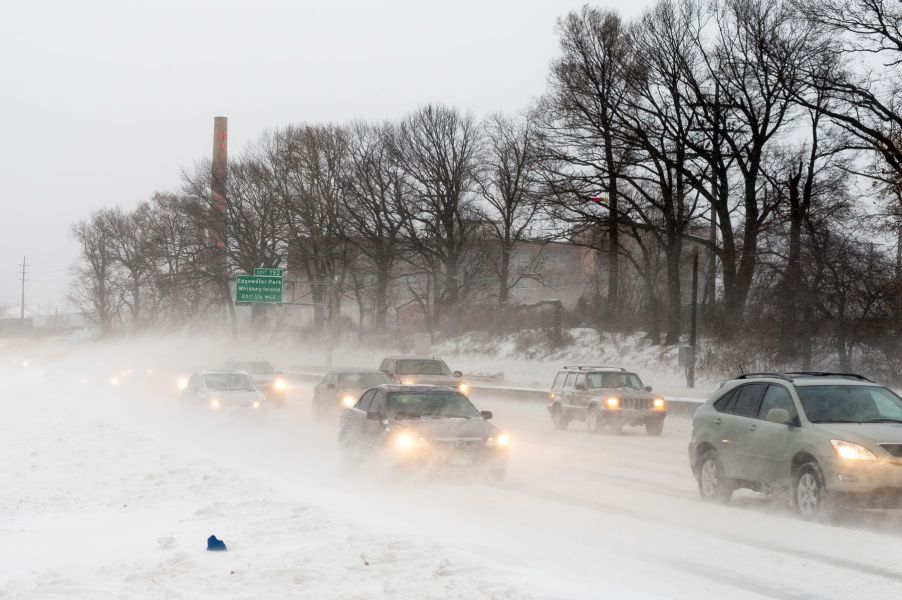
These Top-Rated Safety Features Will Prepare You for Your Winter Commute
Automakers and regulators take car safety seriously. This mission drives all the innovative new safety equipment introduced in new model vehicles. For consumers, these features are great, but only if they know when and how to use them. It’s not uncommon for new vehicle owners to need a little instruction and education on new car safety features in their sweet rides.
While these tech-based additions to vehicles offer peace of mind in almost any driving condition, some are more advantageous for those consumers who routinely drive in snow. If that’s you, these are the top-rated car safety features to tap into for your winter commute.
Safety features are important in any weather condition

It was a big deal for cars to come equipped with seat belts or even airbags back in the day. Car safety has come a long way. Today’s vehicles are armed to the hilt with complete suites of technology-centered alerts and warning systems. Cameras mounted in various inconspicuous spots give drivers up to 360-degree visibility, and materials used during production reduce the risks of injury or death in accident scenarios. These tools are essential in any driving condition. However, what about winter weather commuters? Which of these latest innovations are more beneficial when you’re contending with below-freezing temps and fresh powder?
A fundamental winter staple is a fully charged battery. Some batteries won’t start your car if the temperatures are too low. AutoTrader lists an engine heater as an added layer of winter insurance that helps your car start and run in freezing temps. Warming up your car in the morning will allow you to leave your driveway in a warm ride, with fully-defrosted windows, too.
Some safety features are more useful in snowy and chilly climates
When it comes to car safety and driver-assistance features you’ll be glad to have during the winter, the list is long. Let’s start with stopping power. Anti-lock brakes, emergency braking tech, and stability control can all be critical in navigating ice and snow-covered pavement.
Visibility in these snowy winter conditions is also mission-critical, making adaptive headlights, auto high beams, and blind-spot monitoring car safety must-haves. Alerting you to potential hazards are other warning systems, like rear cross-traffic alerts and forward-collision alerts, which are great for signaling you to any fast-approaching snowplows.
Snow clearance visibility is another significant component, especially when there is ice or snow accumulation to fight on your morning commute. Features you’ll love having include rain-sensing wipers, robust defrost in the front and rear, and headlight washers and wipers.
Remote start, heated mirrors, heated seats, and steering wheels, along with a good set of snow tires, will ensure your winter commute is comfortable and manageable, too. If you have a choice of vehicles to drive during your commute, it’s probably best to take the option that has the most ground clearance or an all-wheel drive option.
The best advice for winter driving in the snow
Knowing your vehicle has all these extra car safety features shouldn’t replace a few winter driving best practices. As Kelley Blue Book suggests, getting to know your car in the snow requires experience. An inexperienced, impatient, or unaware driver can still get in snow trouble even with all the safety bells and whistles.
Some of the best advice involves being prepared. Get an earlier start on those super-cold mornings and take it slow on the drive. Be aware of your surroundings, including a watchful eye for trucks spreading salt or sand. Those municipal vehicles can sneak up on you pretty fast if you’re not careful. Watch how other cars are handling the conditions ahead of you, should there be sliding areas of black ice.
Be on the lookout for flashing lights or other motorists on the side of the road, as Car and Driver suggests. It is also best to keep a constant assessment of your traction from the driver’s seat. You’ll feel when your tires lose grip, and it’s important not to over-correct when you feel it.
With much of the country experiencing winter right now, keep these tips and top-rated car safety features in mind. They’re great for any kind of driving, but you’ll especially appreciate them in the snow and winter months.


